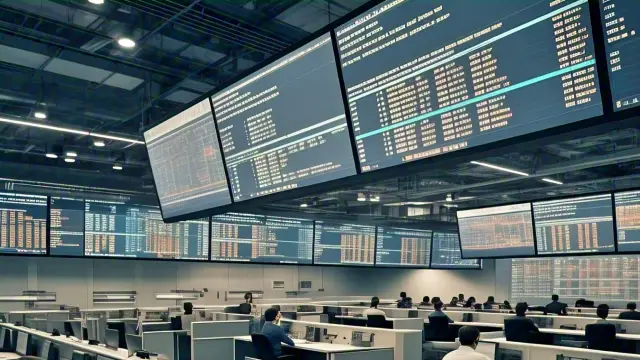Futures commodities trading can be exciting and profitable. But before you dive in, it’s crucial to understand the risks involved. This type of trading has a high degree of risk for financial losses, high leverage, and high volatility. To succeed, you need knowledge, discipline, and a clear plan.
In this guide, we’ll walk you through everything you need to know about futures commodities trading. From understanding contract sizes to choosing the right broker, we’ve got you covered. Let’s get started!
Key Risks of Futures Commodities Trading
Before we talk about strategies, let’s address the risks. These are important to keep in mind:
- High Risk of Loss: Futures trading involves speculation. Prices can move against you quickly, leading to losses.
- High Leverage: You can control large positions with a small amount of money. While this amplifies gains, it also increases losses.
- High Volatility: Prices fluctuate rapidly due to market conditions, weather, or geopolitical events.
Important note: Only use risk capital—money you can afford to lose without affecting your lifestyle.
Step 1: Understand Contract Sizes and Point Values
Every commodity has a specific contract size and point value. These determine how much you’re trading and how profits or losses are calculated.
- Focus on U.S. Markets: Start with commodities traded in New York (NY) and Chicago. These markets are well-regulated and offer liquidity.
- Examples: A corn contract might represent 5,000 bushels, while crude oil could be 1,000 barrels.
Knowing these details helps you choose the right commodities for your portfolio.
Step 2: Check Margin Requirements
Margin is the minimum amount of money you need to open a position. Each commodity has different requirements.
- Why It Matters: Margin affects how much capital you need and which commodities you can trade.
- Example: Gold might require a higher margin than wheat.
Understanding margins ensures you don’t overextend yourself financially.
Step 3: Choose Your Trading Methodology
Don’t trade based on hunches or late-night TV tips. Instead, develop a solid methodology. Here are three common approaches:
- Mechanical Trading System: Uses predefined rules and algorithms.
- Technical Trading System: Relies on charts, indicators, and patterns.
- Fundamental Analysis: Focuses on supply, demand, and economic factors.
Pro Tip: Stick to one system and refine it over time. Consistency is key to success.
Step 4: Decide Between Full-Service and Discount Brokers
Choosing the right broker depends on your experience and needs.
- Full-Service Brokers: Offer advice, research, and support. They charge higher fees but can help prevent costly mistakes.
- Discount Online Brokers: Provide lower costs and more independence. Ideal for experienced traders.
If you’re new to futures commodities trading, consider starting with a full-service broker.
Step 5: Practice with Paper Trading
Paper trading is a risk-free way to practice. You simulate trades without using real money.
- How to Start: Use a manual log or an online platform.
- Benefits: Learn how markets behave and test your strategies.
- Look at Past Data: Analyze historical price movements to understand volatility.
This step builds confidence and prepares you for real trading.
Step 6: Shop Around for the Right Brokerage
Your broker plays a critical role in your success. Look for these qualities:
- Experience: Choose a brokerage with a strong track record.
- Support: Ensure they have staff available to guide you when needed.
- Transparency: Fees and terms should be clear upfront.
Take your time to compare options. The right partner can make a big difference.
Additional Tips for Success
Here are some extra pointers to keep in mind:
- Start Small: Begin with one or two commodities to avoid feeling overwhelmed.
- Stay Informed: Keep up with news that impacts prices, like weather reports or political events.
- Set Limits: Use stop-loss orders to limit potential losses.
Remember, past performance is not indicative of future results. Stay disciplined and stick to your plan.
Common Mistakes to Avoid
Even experienced traders make mistakes. Here’s how to steer clear of common pitfalls:
- Overtrading: Don’t trade too often or take unnecessary risks.
- Ignoring Leverage: High leverage can wipe out your account quickly. Use it wisely.
- Emotional Decisions: Avoid letting fear or greed drive your actions.
By staying calm and focused, you increase your chances of success.
Conclusion
Futures commodities trading offers opportunities but comes with significant risks. By understanding contract sizes, margin requirements, and trading methodologies, you can make informed decisions. Always use risk capital and practice with paper trading before going live.
Remember, futures trading is not a get-rich-quick scheme. It requires patience, education, and discipline. With the right approach, you can navigate the markets confidently.
Are you ready to take the first step? Start small, stay informed, and always prioritize risk management.
What’s your biggest question about futures commodities trading? Share your thoughts in the comments below. If you found this guide helpful, share it with others who want to learn about trading!

